
Newly introduced in this Fall Semester 2022, “In retrospect: Legacies of the American/Vietnam War from diverse perspectives” is a Vietnam studies connected course between Fulbright University Vietnam and University of Utah (U.S). Looking at the main events of the historic war through a multidimensional and multidisciplinary lens, the transnational (and transcultural) course guides students to develop an appreciation for military veterans’ and noncombatants’ experiences. Hence, they are encouraged to critically analyze enduring war legacies upon critical sites of body, mind, culture, landscape, ecology, and society.
“Wars are dramatic and transformational events, taking effect locally and shifting geopolitical landscapes globally. They create violence and upheavals that end, and upend, the lives of combatants and noncombatants alike. They displace refugees, send soldiers into harm’s way, and traumatize soldiers and civilians. Wars redirect massive resources toward military mobilization and weaponry. They create camaraderie with allies and divisions with enemies. Wars have the potential to transform ecosystems, physiological systems, psychology, morality and identity, relationships across families and generations, and young adults’ future aspirations.
Individuals and communities who participate in war experience enduring, often troubling legacies that persist far beyond the declaration of victory or defeat. Wars can also create resilience, and with persistence and dialogue, may ultimately resolve with reconciliation. Optimistically, post-war times offer unique opportunities for peacebuilding, recovery and healing of those wounds that span once warring sides.”
That is the introduction of the two-semester long course “In retrospect: Legacies of the American/Vietnam War from diverse perspectives” written by two instructors from University of Utah (hereafter “UU”) namely Dr. Kim Korinek – Professor of Sociology & Asia Center Director and Dr. Stormy Shepherd – Faculty in History in collaboration with Dr. Nguyễn Nam – Director of Vietnam Studies Center at Fulbright. From January 2022, thanks to the introduction of a mutual colleague, the three lecturers started the process of co-designing the course. Via weekly Zoom meetings, they jointly developed a rigorous syllabus and assessments that reflect the enduring legacies left by the war.
The course unfolds over the course of an entire academic year with three guiding questions – “What lessons from the war should not be forgotten?”, “What legacies of the war warrant further exploration & documentation?” and “What are ways to heal from war and build peace?” In small groups, the students explore the comprehensive answers across the American and Vietnamese sides of the war. During this Fall semester, the students have been taken a deep dive into the war’s diverse legacies through scholarly research and creative works such as popular music, film, photography, and novels. The semester will culminate in students’ proposal presentations of their research projects which will be implemented in Spring. They will also develop a plan to communicate their study results to audience across both countries.
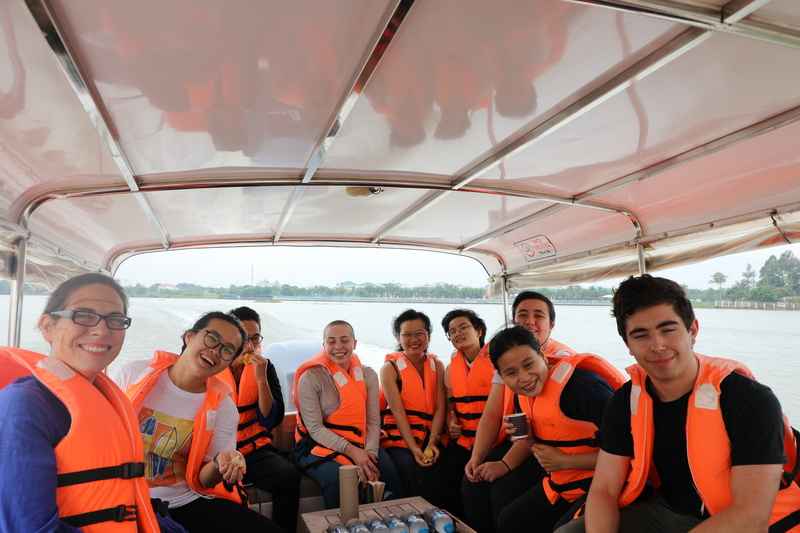
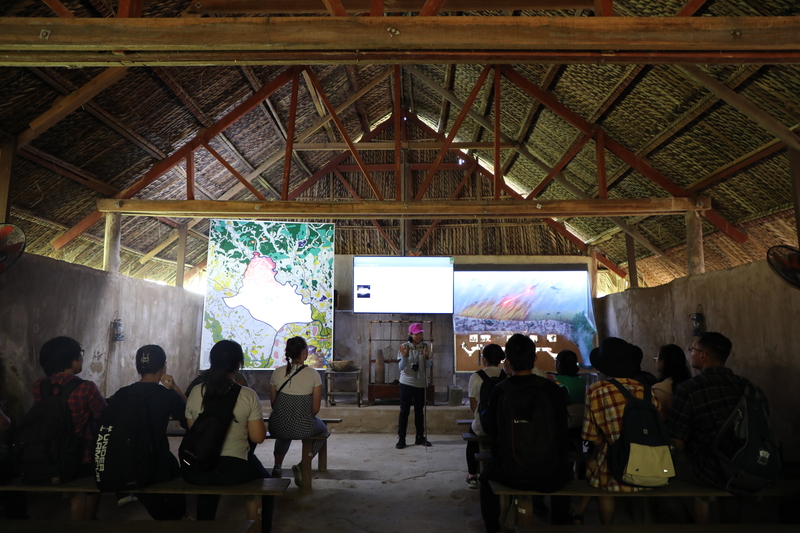
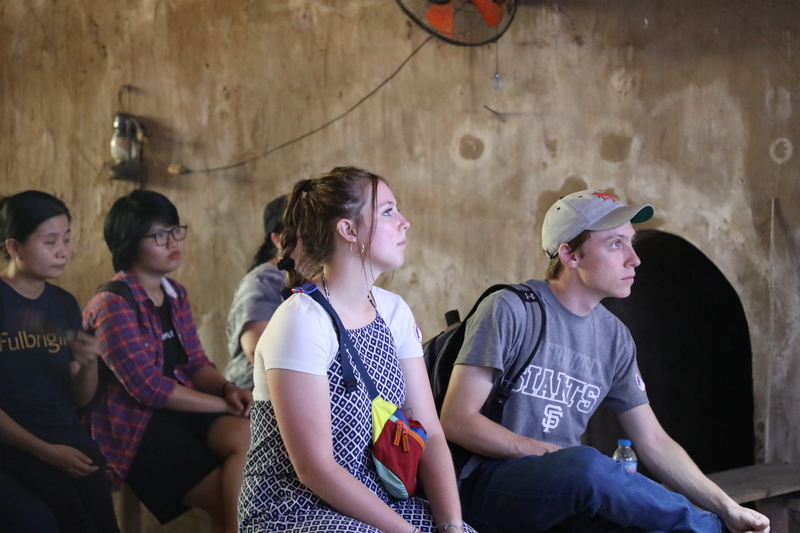
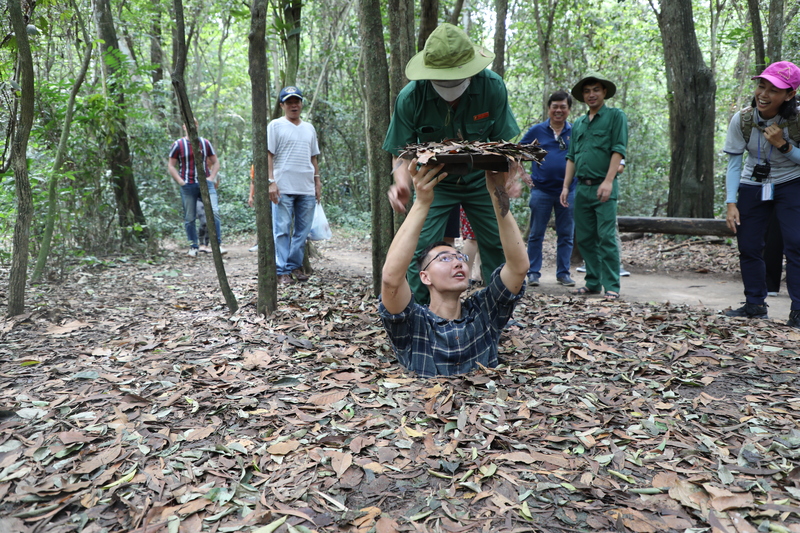
From October 10 to 14, 2022, Fulbright welcomed to our campus eight UU students and their two professors during their 10-day trip to Vietnam. The students of both schools had several opportunities to engage with one another and with guest speakers who shared their personal legacies of war. The learning took place in a number of museum visits, field trips, and joint class sessions. Among the memorable experiences were a conversation with Ms. Tran To Nga, one of the millions of Vietnamese exposed to Agent Orange, and a field trip to the Cu Chi tunnels, a decades-old tunnel complex served as a sophisticated hidden maze during wartime.
After five days in Ho Chi Minh City, UU students and their professors depart for Hanoi to visit the Vietnamese Women’s Museum, Vietnam Military History Museum, People’s Army of Vietnam Headquarters building, and other locations documenting the history of the American/Vietnam War. They were also fortunate to watch the film “Don’t Burn” (“Đừng Đốt”) and have a dialogue with one of Vietnam’s most renowned filmmakers, Dang Nhat Minh.
A post-war transnational approach
A unique feature of the course is its international, collaborative design. Following the “Connected Course” model which is a slight variation to the Collaborative Online International Learning (COIL) approach, not only the lecturers but also the students from both Fulbright and UU get to work closely with each other. Via weekly Zoom-based group meetings, they develop an understanding of war legacies across their lives, families, and societies. Together, the Vietnamese and American young learners share ideas and peer feedback on a discussion springboard, and prepare a research proposal for a project that examines and documents a legacy of the war.
The students have come to learn a great deal about one another and the war’s legacies, as well as the rewards and challenges of remote, collaborative learning that traverses 12 time zones. “It was not the easiest because of how limited the time we can work together as a group, considering every member’s schedule, let alone our time zone difference,” shared Sierra Young, a Sociology undergraduate student at the University of Utah. “We struggled a bit at the beginning of the course. Then we learned to stick to our agreed meeting timeline strictly, and ever since we haven’t missed a week. Because we only have that 1.5 hours together, we all come prepared. Before every meeting, each of us would read articles, watch documentaries, or research in specific areas so that when we meet, we make every minute count.”

“It was not the easiest because of how limited the time we can work together as a group, considering every member’s schedule, let alone our time zone difference,” shared Sierra Young, a Sociology undergraduate student at the University of Utah.
“My Fulbright peers were definitely a big help. I have never learned about something so in-depth in such a short amount of time and that is because I got to learn so much from them. This is the first time that I have ever been in a class with international students who are my age. If it were not for them, I could never have had access to and been able to interpret Vietnamese documents at all. Our friendship extends beyond the classroom, too, despite we are halfway across the globe from each other most of the time.”
Through regular interaction and completion of shared assignments with team members, the youth has been honing their skills in cross-cultural communication, virtual collaboration, and team approaches to facilitate knowledge production. Utah’s field trip to Fulbright University Vietnam also helped tighten the bond among students.
“Before the trip to Vietnam, UU students had a basic understanding of the American/Vietnam War. But it was not until they arrived in Vietnam, met Fulbright students in-person and visited historic sites together that they formed a real connection to the history, culture, and beauty of Vietnam,” explained Dr. Shepherd. “From the moment that UU and Fulbright students met on Zoom and then in-person, they have constantly developed genuine friendships, and enhanced one another’s understanding and learning of the war legacies. As an instructor, it is rewarding to teach using this interactive, hybrid method and to witness how hospitable, respectful, and curious our students were to learn about each other. Outside of the classrooms, there are definitely lasting friendships developing. This is an integral part of the ongoing reconciliation process in the post-war era.”
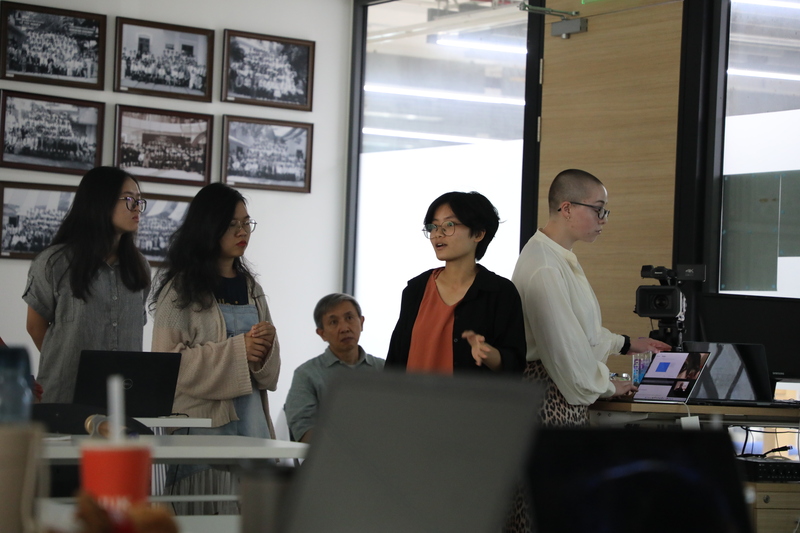
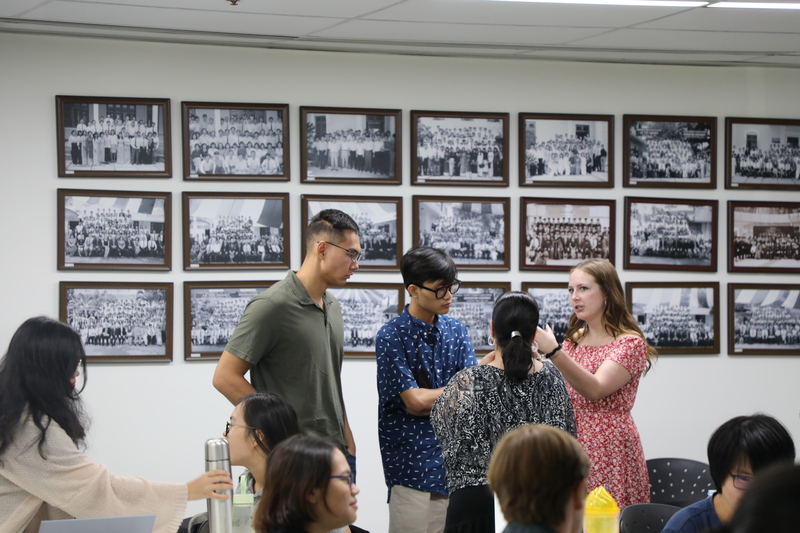
A multi-dimensional and multi-directional reconciliation
According to the syllabus, the course revolves around major events following the timeline of the American/ Vietnam War, with a great emphasis on war’s legacies across diverse populations who experienced the war, including Vietnamese and American participants in the fighting, activists against the fighting, and a wide range of noncombatants who, despite being on the “margins” of the fighting, nonetheless experienced war’s toll. Through readings, films, music, photography, and student-directed conversations, the course has been aspiring to develop a more comprehensive understanding of military veterans’ and noncombatants’ experiences – their memories of war, experiences of trauma, and sources of resilience. More than just a declaration of victory or defeat, war legacies have multiple dimensions ranging from politics, environment, to culture, and all aspects of human lives at the time and in the future.
Furthermore, the uniquely transnational aspect of the course encouraged students from the two universities to contribute to a multi-directional pool of resources from once conflicting parties in both Vietnamese and English. This means that by analyzing a specific key event, such as the Tonkin Gulf Incident (1964), multiple perspectives from those who took part in and survived are included in the discussion. By learning the reasonings behind each action from both opposing sides, students can understand and critically analyze the rationale of the war and expand their own points of view.
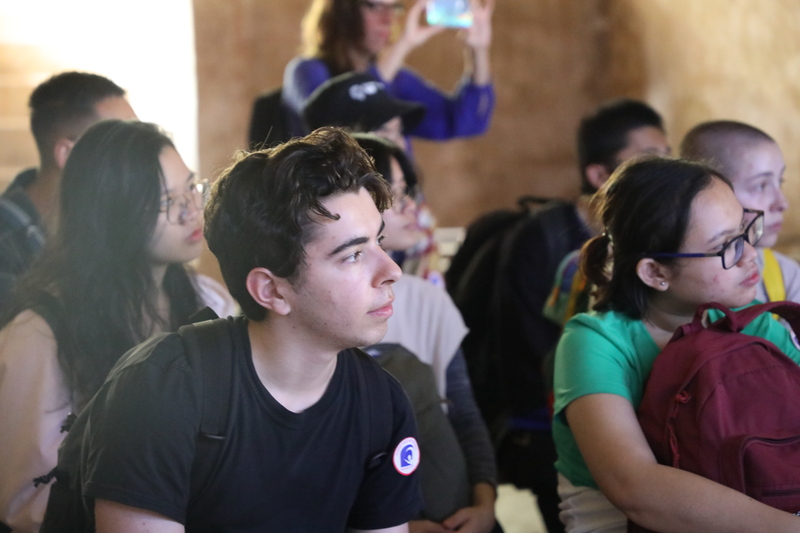
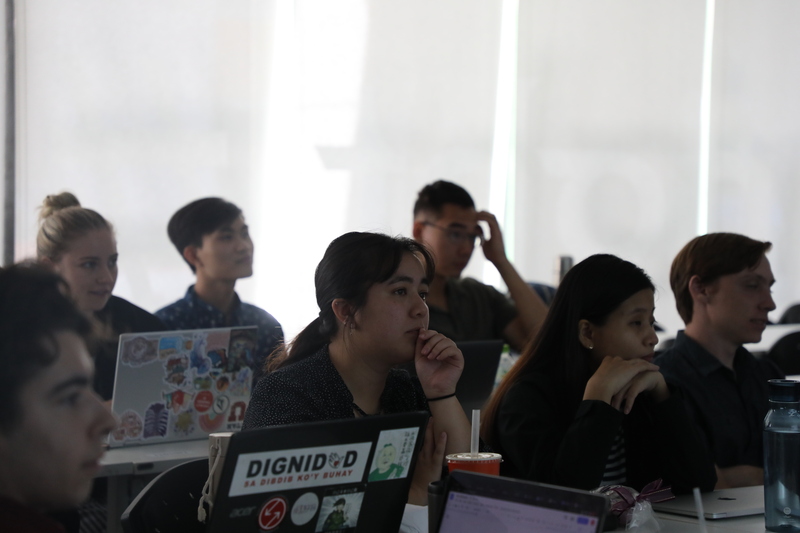

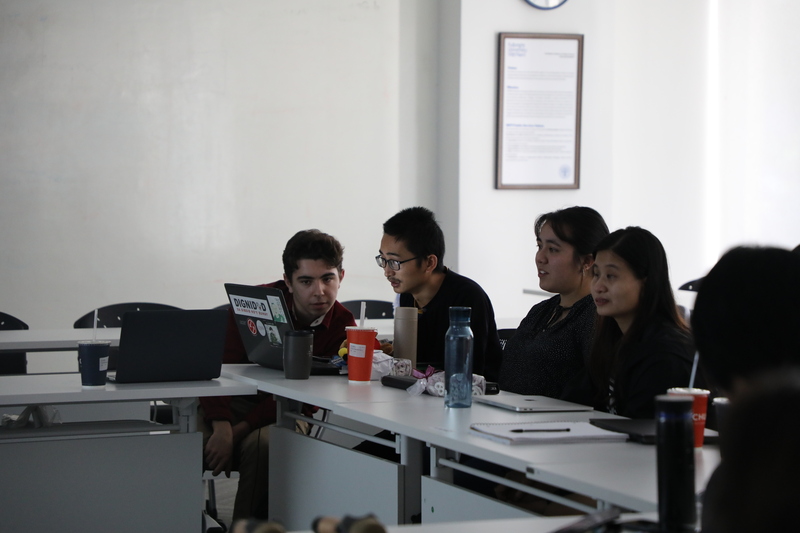
To many of the students, this is the first time they have ever learned about the other side’s reasonings of the war. “It was such an eye-opening experience, being able to hear about the Vietnamese’s point of view!” shared Young. “It is not until recently did I realize there are that many rationalizations for a certain event. I have never had the chance to learn more than just a specific discourse of history. There is so much more to the war beyond figures. I am interested specifically in sociological perspective, for example, the crisis of conscience. Each participant in the war had their own beliefs, dreams, and distinct connections to their families and communities, which explains why they had different, or in this case, opposing reasonings that would gradually snowball the conflict. I think this course has challenged my assumptions constantly, and I have to start being critical about all the things that I once sided with so quickly.”
In addition, the course invited several guest speakers who were involved in the war to talk with the students. Among them, Ms. Tran To Nga evoked lots of emotions with her experience during and postwar. Ms. Nga – a French-Vietnamese activist, used to be a reporter for the Liberation News Agency (now the Vietnam News Agency). During her time as a war correspondent, she was exposed to Agent Orange sprayed by the US Military, after which she contracted many diseases, and her health deteriorated severely, affecting her children. Her first child died at the age of 17 months, while the other two and their children also suffered from many diseases due to dioxin exposure. In 2014, Nga filed a lawsuit to the Evry Court (France) to sue 26 American chemical companies for supplying Agent Orange for the US Military use in Vietnam War in the 1960s-1970s. In May 2021, nevertheless, the French Crown Court of Evry city ruled that it did not have the jurisdiction to judge a case involving wartime actions of the U.S. government. At the age of nearly 80 years old and suffering from several kinds of illnesses due to Agent Orange exposure, she still regularly travels between France and Vietnam to stand side by side with Vietnamese Agent Orange victims in the struggle for justice and better lives.
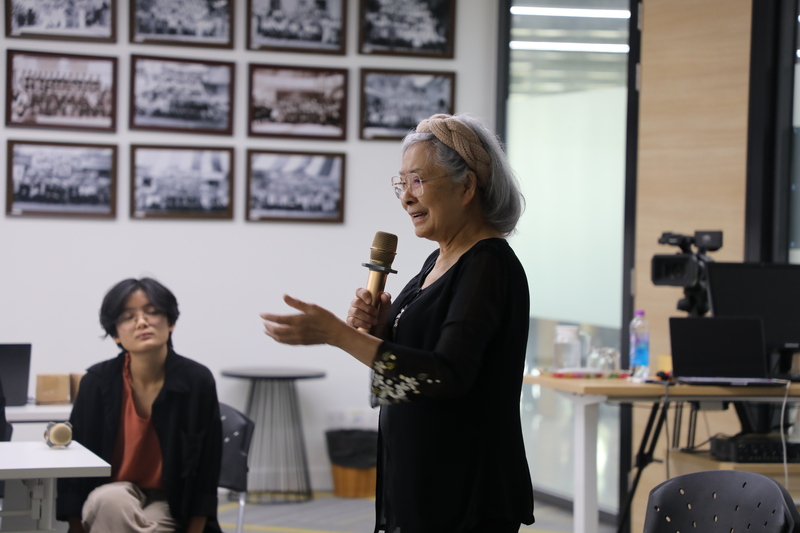
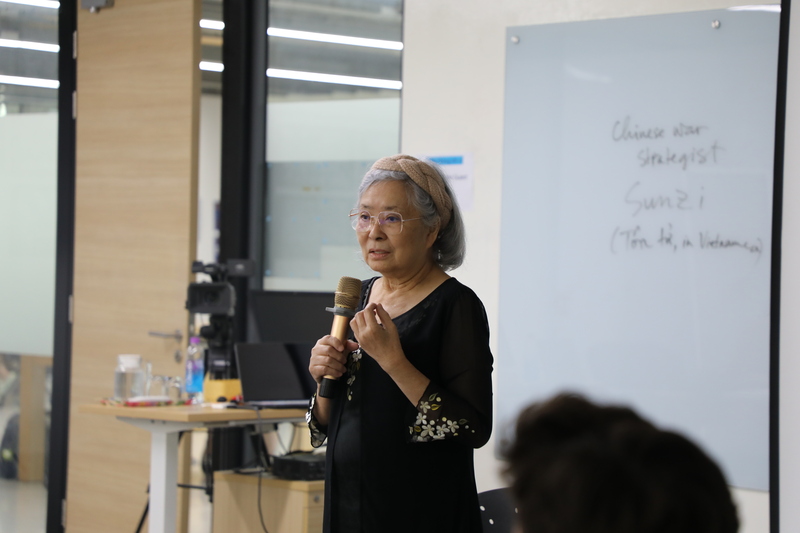
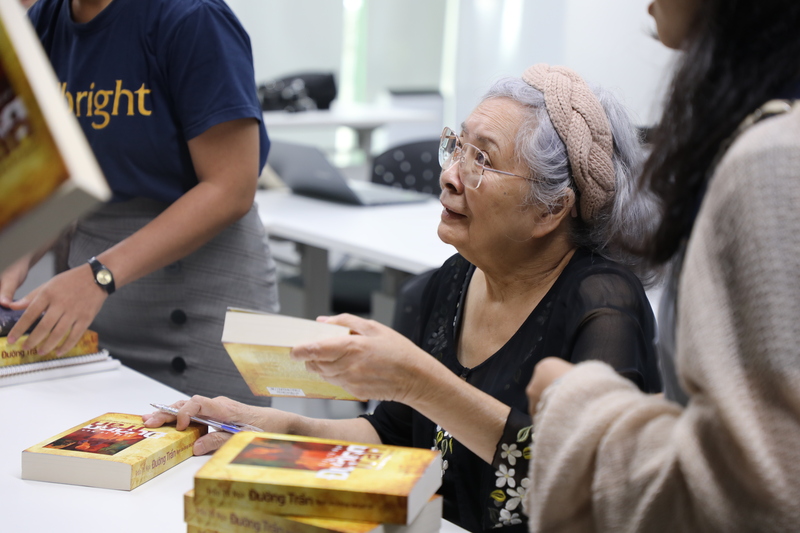
“I was deeply touched by Ms. Nga’s sharing. Even though to this day, she and her family are still very much scarred by the war, she understands that the war is a tragedy to both sides, Vietnamese and American, all of those who were involved,” shared Dong Thi Hai Yen (Class of 2024), a Fulbright visually impaired student whose three relatives in her family share the same condition. “Honestly, I don’t really know for sure if my condition is directly caused by Agent Orange. My grandfather fought in the war, but it is not yet possible to trace dioxins in the descendants’ bodies.”
“Ms. Nga’s journey to seek justice for the Agent Orange victims moved me tremendously. Even though she didn’t win the lawsuit against the American chemical companies, approximately 200 newspaper articles were published describing the case in every language possible. To me, that is a huge win. It shed light to the whole world on a troubling war legacy that to these days, millions of Vietnamese and Americans still suffer from. Ms. Nga empowered me to care more about my family and my community. I will keep up helping the disabled to overcome difficulties and be more vocal about enforcing laws that enable and protect them in the workplace,” continued Hai Yen.
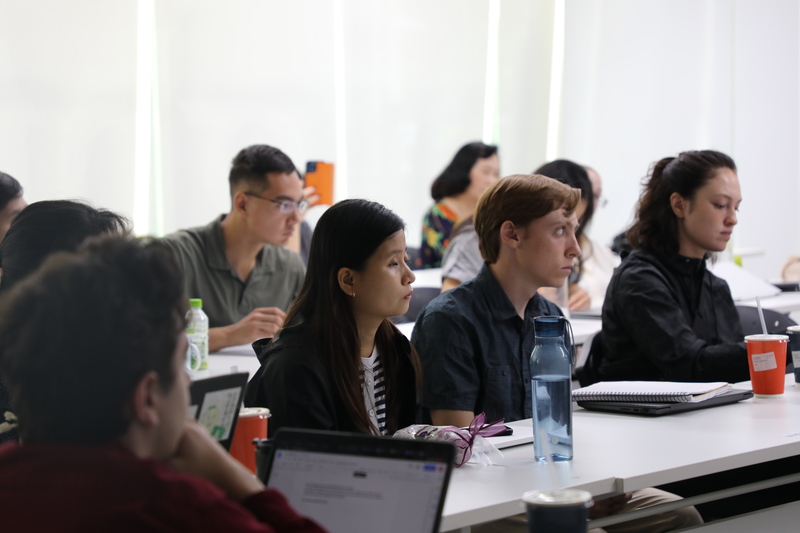
“I was deeply touched by Ms. Nga’s sharing. Even though to this day, she and her family are still very much scarred by the war, she understands that the war is a tragedy to both sides, Vietnamese and American, all of those who were involved,” shared Dong Thi Hai Yen (Class of 2024)
Key learnings of an innovative history course
The transnational, multidimensional and multidirectional course is an unparalleled educational experience for both the lecturers and the students of the two schools. “This course represents my first experience co-creating a connected course with a professor and students from a different university,” exclaimed Dr. Korinek. “It has been a truly rewarding experience as an instructor, to support cross-cultural engagement and learning which encourages multiple perspectives taking on history and war legacies.”
“I have been impressed with the depth of knowledge that the students have been sharing in their analyses of key events, as well as photographic images from the war era,” exclaimed Dr. Korinek. “Together they have situated, described, and analyzed the significance of major events such as Operation Ranch Hand or My Lai massacre exceptionally well. Weekly, we have a 3-hour seminar and we always fill the time with vibrant discussion of the ways that the war continually influences both of our societies and the lives of those who experienced the war first hand, as well as their families and communities.”
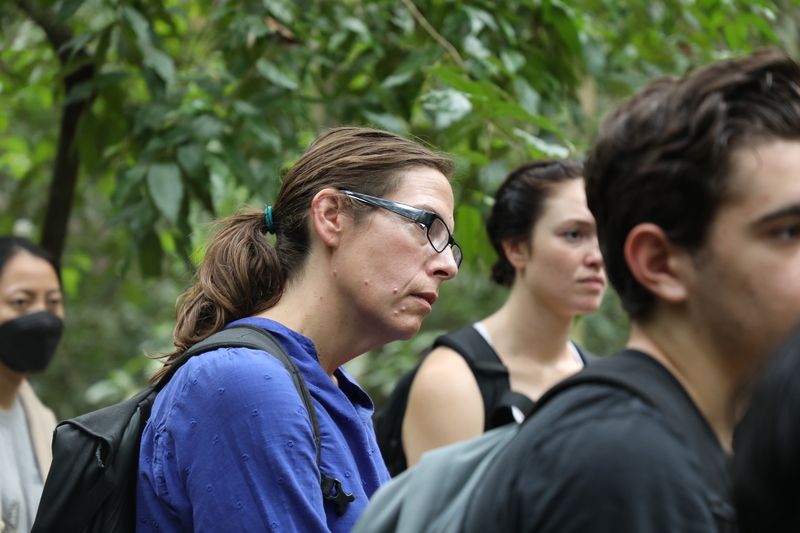
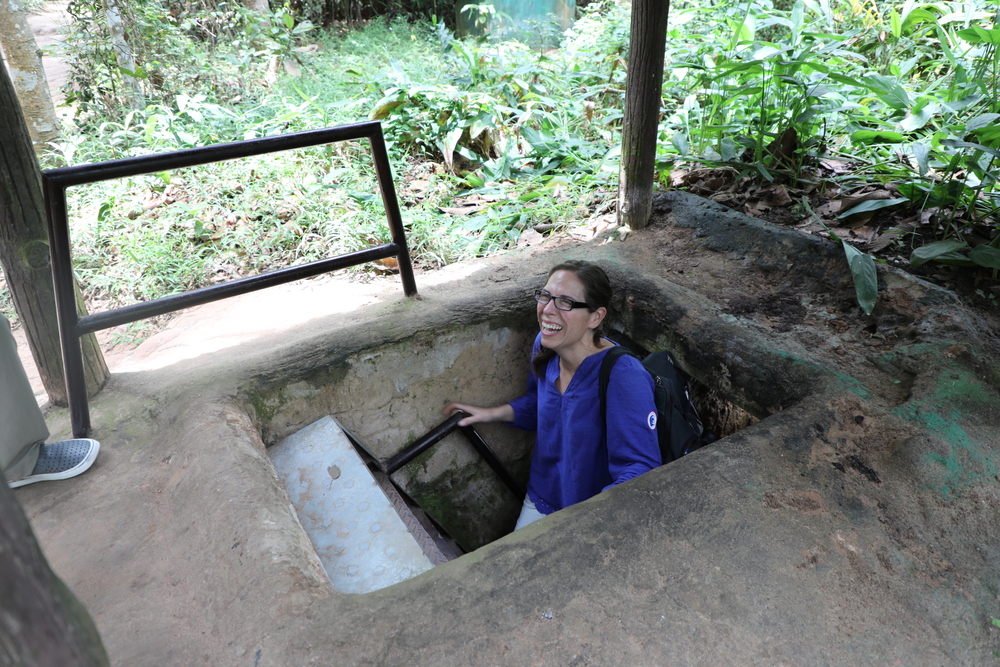
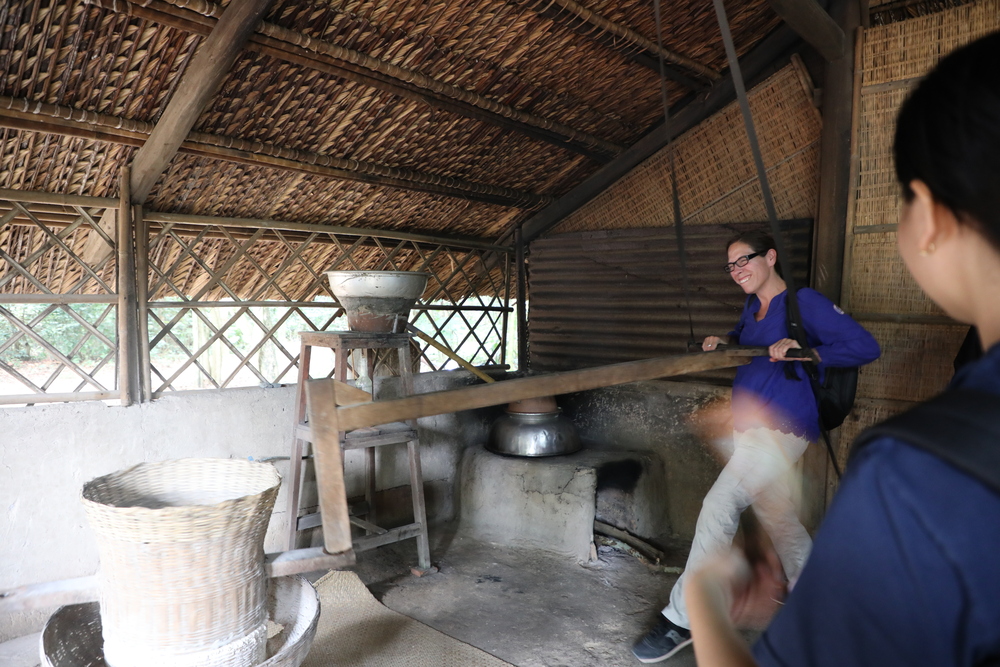
Noting that the students have conducted several independent analyzes of wartime music and film, and shared them with their classmates, Dr. Korinek continued, “The course is all the more rewarding because the students are deeply engaged with one another, across the University of Utah and Fulbright. They share their learning with one another in a generous, enthusiastic way. It is a great benefit of student-directed learning.”
As a student, Lương Ngọc Chung (Class of 2025) treasures his friendships with many UU peers. He shared: “To be honest, I was worried at first when we had to work with each other. Not only do we have differences in culture, but our learning styles may be very distinct. But as the weeks pass by, I learn that we young people share a lot of similar hobbies and interests. From a little skeptical in the beginning, now I am very looking forward to our weekly meetings. And with the UU students’ trip to Ho Chi Minh City, we are only getting closer. We talk about a lot of things that stretch beyond our connected classes.”
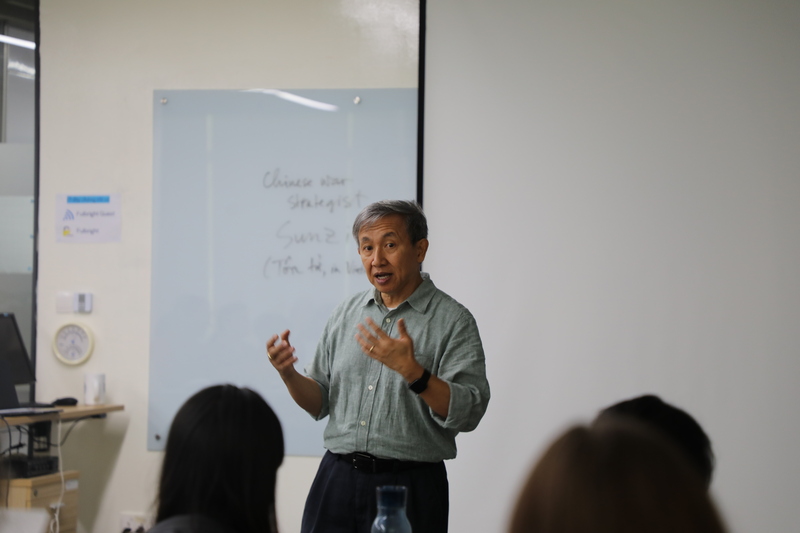
To Dr. Nguyễn Nam, this is a great chance for students to learn about the essence of war reconciliation.
To Dr. Nguyễn Nam, this is a great chance for students to learn about the essence of war reconciliation. “Joining this course, students can develop true self-less empathy. There are so many different levels of dimensions and directions in a story. How to tell the story, nonetheless, is based specifically on one’s point of view. This course has been witnessing a lot of ‘first times’ in both Vietnamese and American students. It is not every day they are on an educational platform that allows them to hear about the other side of historical discourse, not to mention the open and respectful discussions with each other. Only when students understand each other’s perspective can they truly empathize for one another. And thus, together they would be able to facilitate the war reconciliation in both countries.”
Phương Mai
reposted from Fullbright.edu/VA
